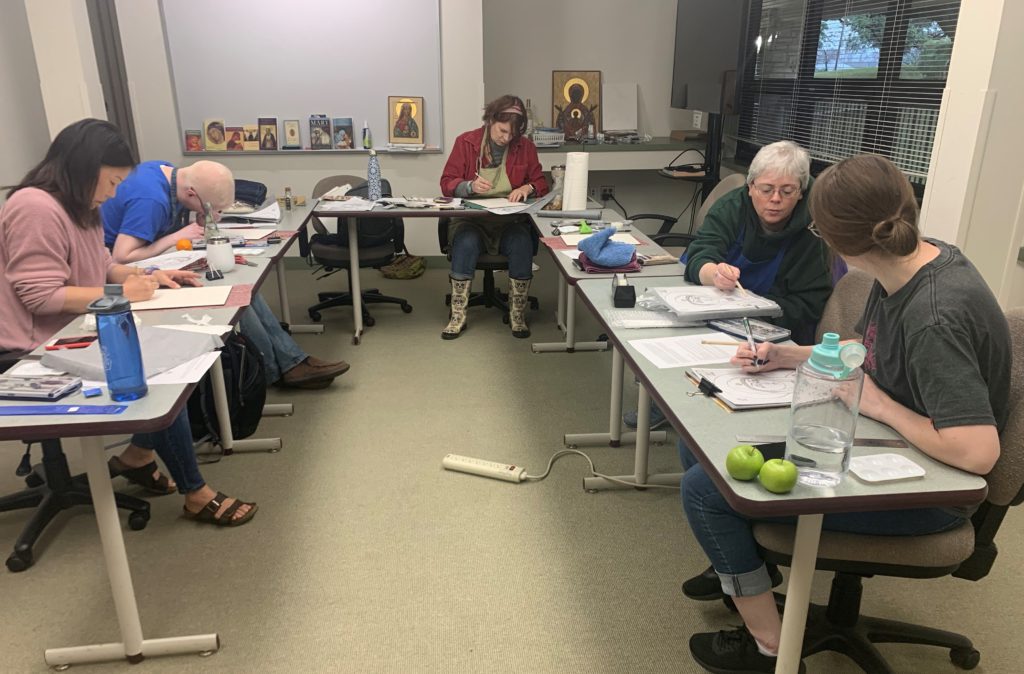Seminary of the Southwest hosted an iconography workshop at the end of January, before classes began for the spring semester. A group of five seminary students got together to ponder and create iconography artwork, which is the art of making icons or visual spiritual representations that are often seen in a church building.
Alyssa Stebbing, junior MDiv at the seminary, had the idea of putting this workshop together. She said her classmates had asked her to hold this workshop because they were interested in iconography. Leadership at Southwest asked her to lead this pilot class with just a few people to see how it went.

“We learned the liturgy of writing an icon and the spiritual connections of each of the 23 steps,” Stebbing said. “We prayed, laughed, cried, and reflected on the inner formation as we worked through the process. My intention is not to train in a skill only, but focus on the spiritual process of art making.”

Ashley Colley, an MDiv junior, attended the workshop. She said she was interested in the workshop because she has loved and been challenged by icons since she became an Episcopalian and wanted to take advantage of the opportunity to learn more about them.
“What surprised me the most was how deeply spiritual every aspect of icon writing is from the breath you use in gilding, the materials you mix for pigments, the brush strokes you use, placement of every line; from start to finish there is purpose and meaning,” Colley said. “The difficulty for me came in the moments where my human affinity for perfection continued to get in the way. Wanting every line to be perfect was quickly met with frustration in myself, and it was a lesson in trusting God and giving grace to myself in aspects of my life that extend beyond the workshop. The difficulty was accepting that this icon was teaching me about how I view the intersection of my humanity and God, even more so than the difficulty of gilding and painting.”
Julie Rodriguez, MDiv junior, also attended the event because she was intrigued by the spirituality of icons.
“I learned some history of the icon writing in Russia, the many meticulous steps involved in icon writing, and symbolic meanings behind everything you do in icon writing,” Rodriguez said. “I was pleasantly surprised how writing the icon is so much like the spiritual journey – there were many spiritual lessons and it validated my own spiritual journey. The most difficult part was letting go of control of how it was going to turn out, trying to make each part perfect and getting worried or upset if a mistake was made. What surprised me was that like the grace of God, the subsequent steps either softened the mistake or made it look not like a mistake at all. The art of icon writing was very therapeutic for me, it helped me to be present in the moment and achieve a state of flow in which nothing else entered my mind but being attentive to God.”
Overall, the class led to students discovering a new level of admiration for these symbolic pieces of art. “This artwork reminds me daily that humanity is good, that it is loved by God, and that even among my failures the final product of my life will be a reflection of the Divine- just as my icon is,” Colley said.

